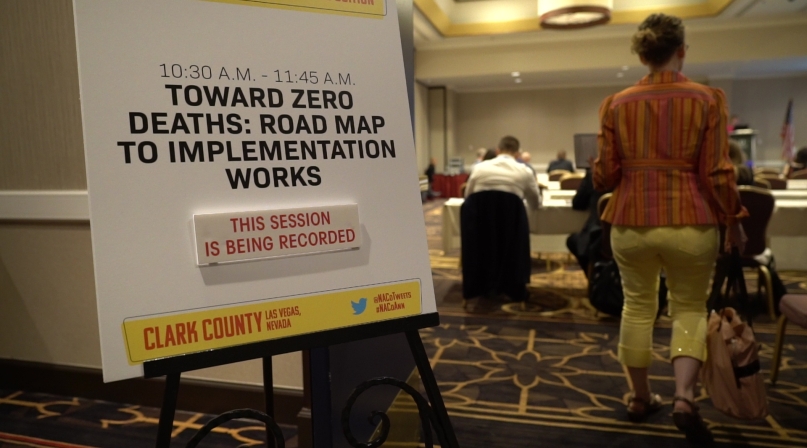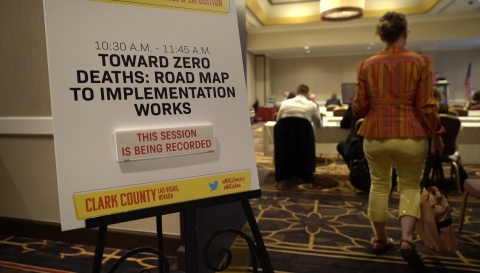Counties work to eliminate traffic fatalities
Author
Upcoming Events
Related News

Key Takeaways
With over 35,000 traffic fatalities reported nationally in 2017, county leaders and traffic safety professionals are turning to zero-fatality programs to find ways to make zero traffic fatalities an attainable goal.
“To some folks, zero may seem unrealistic. But if zero isn’t the right number, what is?” asked Gina Baas, who serves as the associate director of education and engagement for the Center for Transportation Studies at the University of Minnesota.
Baas said that traffic safety movements have been gaining momentum over the past few years and all share the common goal of reaching zero traffic-related deaths.
“What if one of those deaths was someone that you knew or loved— a co-worker, a neighbor, a son or daughter, a spouse? When you think about it that way, wouldn’t you think that zero is the only acceptable goal?” she said.
In 2017, there were approximately 37,133 traffic fatalities. Out of these fatalities, 35 percent occurred on local agency roads. Additionally, crashes have caused 2.18 million serious injuries in 2016.
“These statistics translate into tremendous human grief and suffering. As a country, we have not seen significant progress in reducing the number of fatalities,” she said.
Baas discussed elements for implementing traffic safety programs and encouraged attendees to use self-assessment tools to analyze their current departments and goals for implementation.
Currently, 47 states have adopted some form of Toward Zero Deaths or Vision Zero strategies.
Richard Storm, a traffic safety and planning engineer, added that it is important for communities to set goals that lead them down a path to eventually reach zero traffic-related fatalities. Goal setting also allows departments to measure their progress as they get closer to their goals.
“We believe that agencies should adopt a zero-fatality goal as their long-term vision,” he said.
Around half of the agencies of attendees represented in the room had officially adopted a policy of zero deaths as a long-term vision.
Storm referred to Lane County, Ore., which has created a transportation safety action plan and adopted a “toward zero death” goal, and New York City, which has created a Vision Zero Task Force with difference agencies and partners.
He advised counties to create a Toward Zero Death coordinator position which can serve as a central agency in the community.
In Marin County, Calif., Transportation and Traffic Division Manager Robert Goralka said the county has developed a local road safety plan.
“What are the roads and intersection of high collision in your county? Where are the counter measures that could be adjusted in your county?” he asked attendees. “The process to put that together is the local road safety plan working through the data.”

Attachments
Related News

CMS requires state Medicaid suspension upon arrest versus termination
Effective January 1, 2026, federal law now requires states to suspend, rather than terminate, Medicaid coverage when an individual is incarcerated.

ICE hiring surge challenges county law enforcement
Local governments hope that their law enforcement personnel will favor the familiarity of the communities they serve when weighing potentially lucrative immigration enforcement recruitment bonuses, which may require them to uproot their lives.

U.S. House of Representatives passes SPEED Act and other permitting reform bills
On December 18, the U.S. House of Representatives passed the SPEED Act (H.R. 4776). The SPEED Act would strengthen county involvement in decision-making and make needed commonsense reforms to the federal environmental review process.
